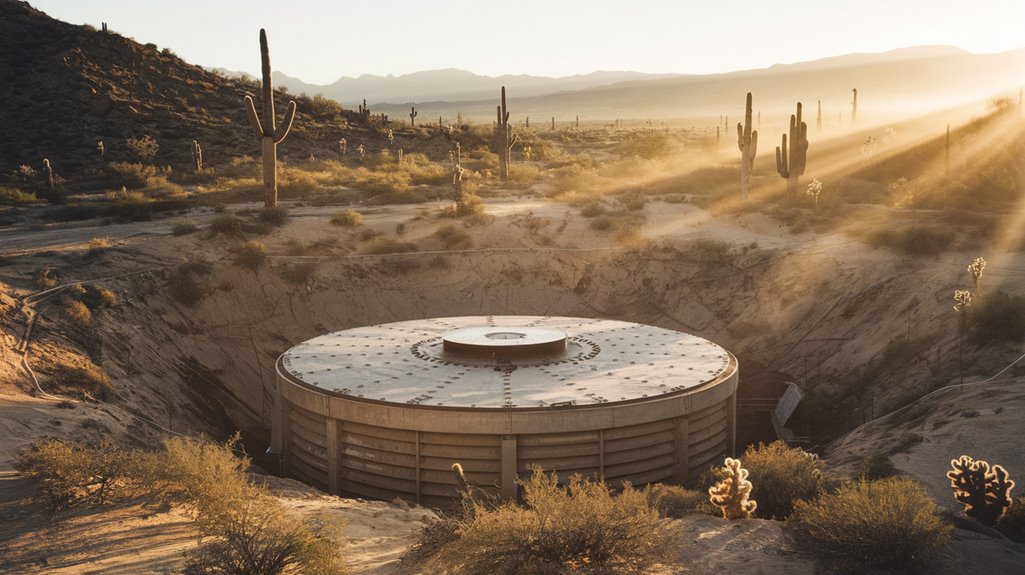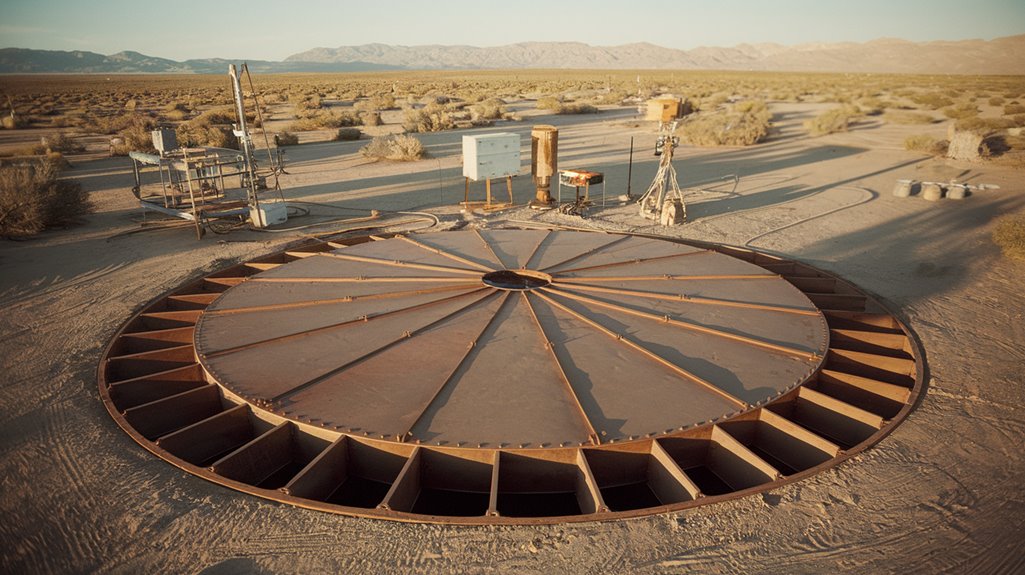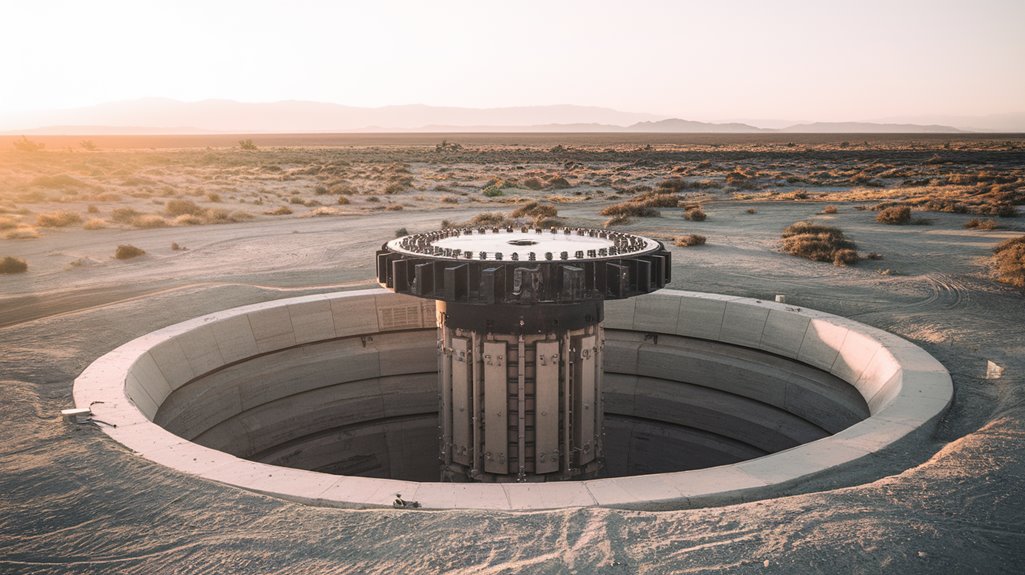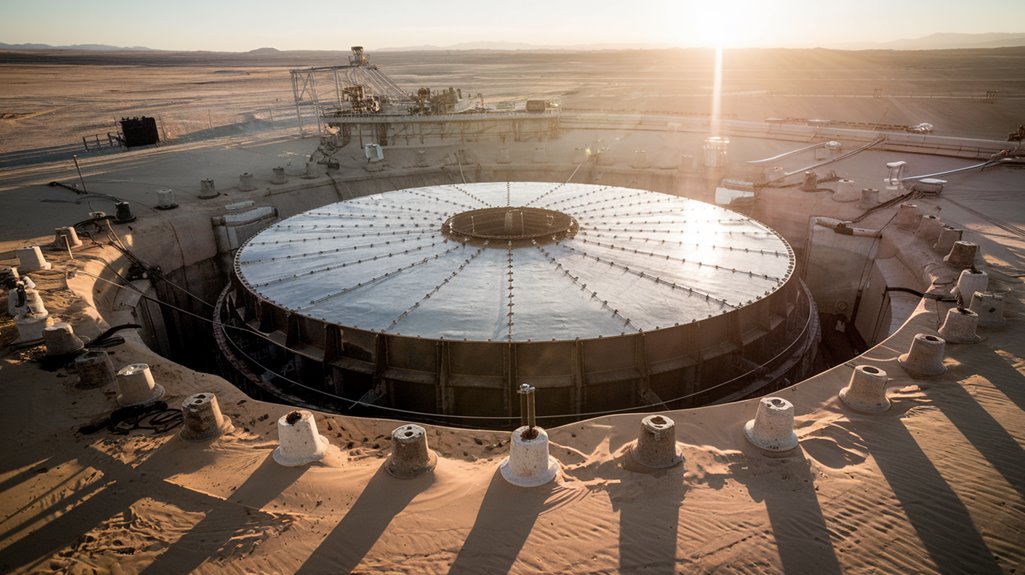Did We Accidentally Launch a Manhole Cover Into Space?
You've probably heard wild stories about space exploration, but here's one that might surprise you: In 1957, the U.S. government may have accidentally launched a manhole cover into space during a nuclear test. While NASA was still preparing for its first satellite launch, this four-foot-wide steel disk potentially became Earth's first human-made object to reach space. The details of Operation Plumbbob's Pascal-B test reveal an astonishing mix of scientific ambition and unplanned consequences.
The Incredible Story of Pascal-B Test

While most space launches involve careful planning and sophisticated rockets, one of history's most fascinating potential space launches happened by accident.
In August 1957, during a nuclear safety experiment called Pascal-B, scientists placed a nuclear bomb at the bottom of a 500-foot hole and sealed it with a massive steel plate. The test, conducted at the Nevada Test Site, was part of Operation Plumbbob's efforts to contain nuclear fallout from underground detonations. The test was overseen by Dr. Robert Brownlee who designed the concrete cap. The flash from the detonation was brighter than sunlight by more than a million times.
In the historical context of the Cold War and space race, what happened next was extraordinary.
When the bomb detonated, the steel plate was captured on a high-speed camera traveling at an estimated 125,000 miles per hour – five times Earth's escape velocity. The plate was visible in just one frame before disappearing forever, leaving scientists to debate its fate.
Breaking Down the Nuclear Underground Experiment
Nuclear underground testing marked a pivotal shift in weapons development during the Cold War era. You can trace its origins to November 1951, when scientists conducted the first subterranean nuclear blast, creating a crater 260 feet wide and releasing a cloud that reached 11,500 feet high.
The evolution of underground testing advanced notably with breakthrough experiments like Teapot Ess and Plumbbob Rainier. While early tests still released radiation into the atmosphere, scientists quickly learned to improve nuclear safety through better containment methods. The Rainier shot in September 1957 became the first fully contained underground nuclear test, setting a crucial precedent. The extreme conditions during these tests would vaporize both the testing equipment and surrounding rock, creating distinct zones of destruction that extended outward from the blast site.
The Mystery of the Missing Manhole Cover
How often do manhole covers mysteriously vanish from our streets? You'll find this problem more common than you might think, with cities across America grappling with manhole cover theft.
From Solomons, MD to San Antonio, TX, these heavy metal covers disappear at an alarming rate, often ending up in scrap yards despite legal prohibitions. On the Governor Thomas Johnson Bridge, a manhole cover weighing 300 to 400 pounds disappeared overnight, creating a hazardous situation for drivers.
The safety implications are severe – just ask the woman in San Antonio who fell into an uncovered manhole. The San Antonio Fire Department conducted a rope rescue operation to safely retrieve her from the six-foot drop.
In Prichard, AL, over 100 covers vanished, leaving dangerous holes throughout the city. While Public Works departments rush to install temporary barriers, the cost of replacement isn't cheap.
You're looking at hundreds of dollars per cover, and catching the thieves proves challenging due to limited surveillance.
Communities now must stay vigilant, reporting missing covers before someone gets hurt.
Calculating the Impossible Speed
Speaking of missing manhole covers, one particular cover's disappearance stands out from all others – not because it was stolen, but because it may have become the fastest man-made object in history.
Like scientists using their finger calculations to solve complex math problems, scientists performed speed calculations that revealed the manhole cover reached over 37 miles per second – about 130,000 mph. Just as pilots are taught to maintain best glide speed during emergency maneuvers, this steel disc maintained its own remarkable velocity through the air.
During the Pascal-B nuclear test in 1957, this steel disc achieved mind-bending speeds that'll make you question what's possible.
That's more than five times Earth's escape velocity! The nuclear dynamics of the underground explosion created such immense pressure that the cover appeared in only a single frame before vanishing forever.
Whether it disintegrated, reached orbit, or escaped into space remains one of science's most intriguing mysteries.
Space Race's Unexpected Contender

While the world anxiously waited for humanity's first satellite launch in 1957, an accidental space pioneer may have already beaten Sputnik to the punch. The Pascal-B nuclear test inadvertently created what might've been space exploration's most unlikely breakthrough: a simple manhole cover potentially becoming the first human-made object to reach space. Much like complex systems encountered during the Space Shuttle program, the unpredictable physics of the test defied engineers' expectations.
Here's why this nuclear power experiment matters to space history:
- The cover reached speeds of 130,000 mph, far exceeding Earth's escape velocity.
- It vanished before Sputnik's historic October launch.
- The speed surpassed modern spacecraft like New Horizons.
- It challenged our assumptions about early space achievements.
While you won't find this manhole cover in official space records, its incredible journey has sparked decades of scientific debate about whether this accidental launch beat the Space Race's formal beginning. A detonation at this height would have created an aurora-like phenomenon visible from Earth, similar to what observers might have witnessed during the manhole cover incident.
Scientific Legacy and Modern Analysis
Despite decades of technological advancement, scientists still debate the true fate of Operation Plumbbob's accidental space pioneer. The experimental design, which aimed to test nuclear blast containment, produced unprecedented results when the manhole cover reached an estimated speed of 125,000 mph – five times Earth's escape velocity.
Modern nuclear physics analysis suggests two possible outcomes: either the cover vaporized in the atmosphere due to compression heating, or it potentially survived by deforming into a more aerodynamic shape. The Pascal-B test proved instrumental in helping scientists understand shockwave effects and velocity calculations. Small-scale experiments demonstrated that explosive gas pressure could transform flat metal into conical shapes capable of atmospheric penetration.
The explosion's flash, a million times brighter than the sun, generated immense pressure that launched the cover so fast it appeared in only one frame of the high-speed camera.
While you can't verify its fate due to test ban treaties, this incident remains a fascinating example of how unplanned discoveries can emerge from scientific experiments.










